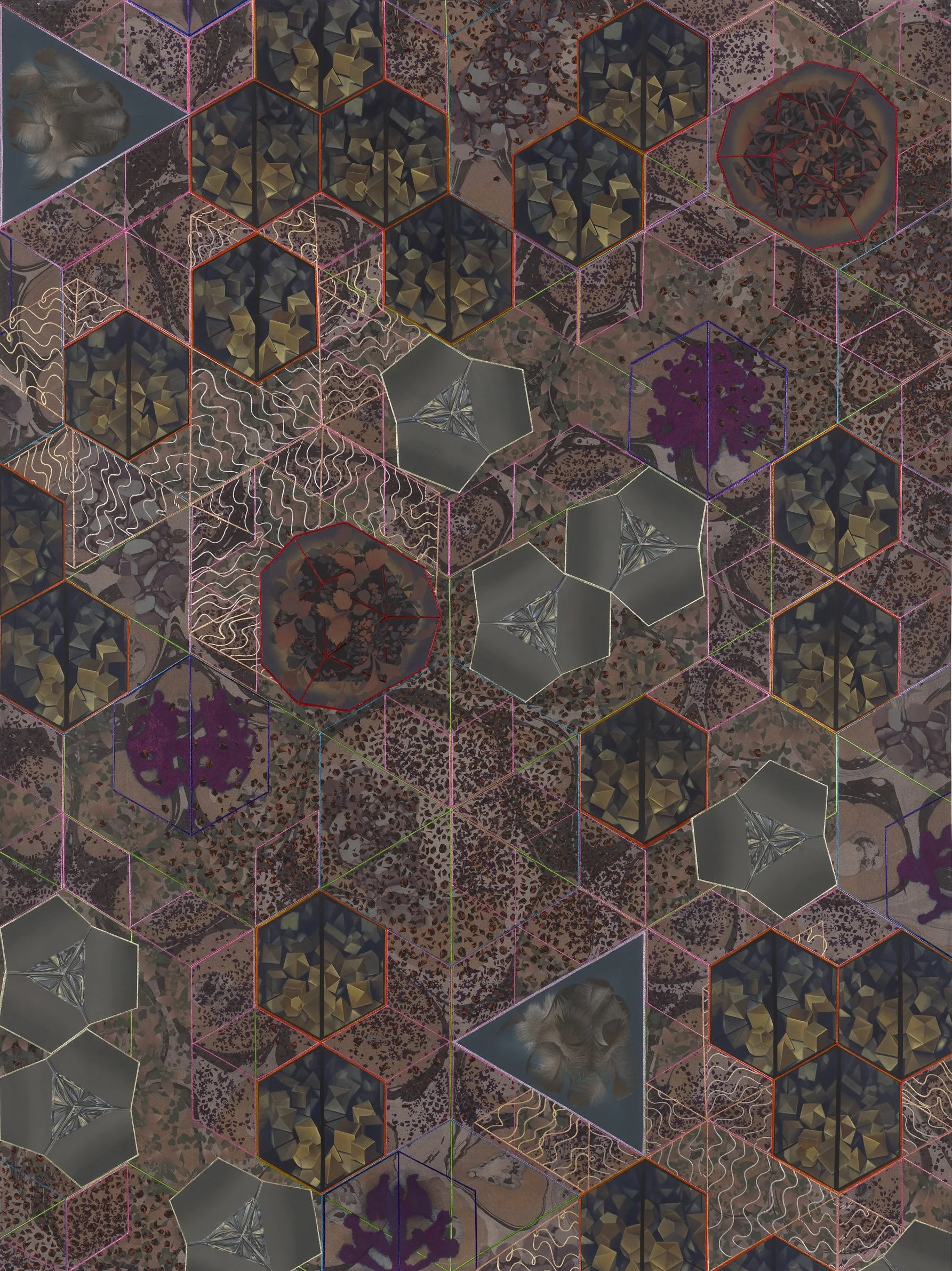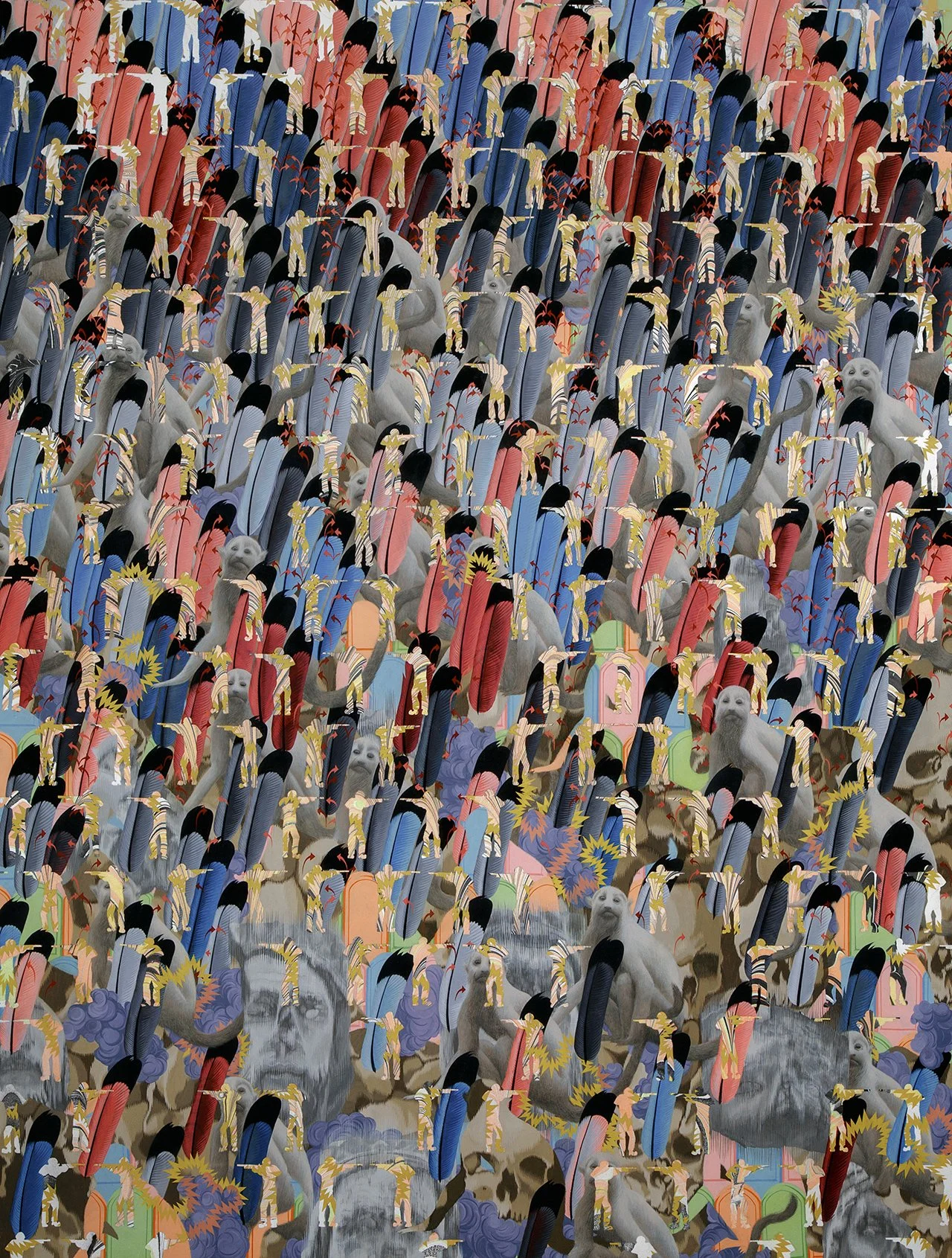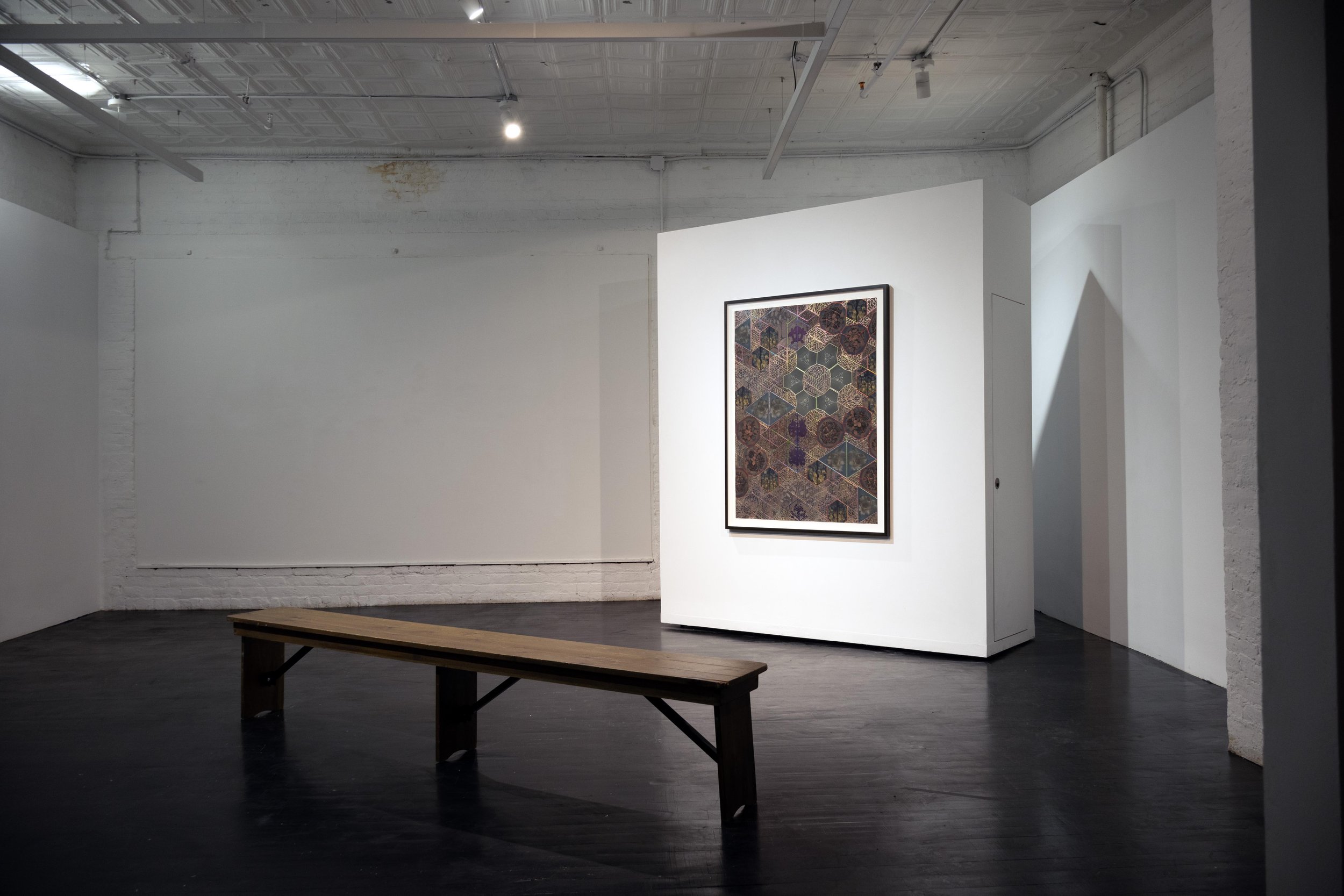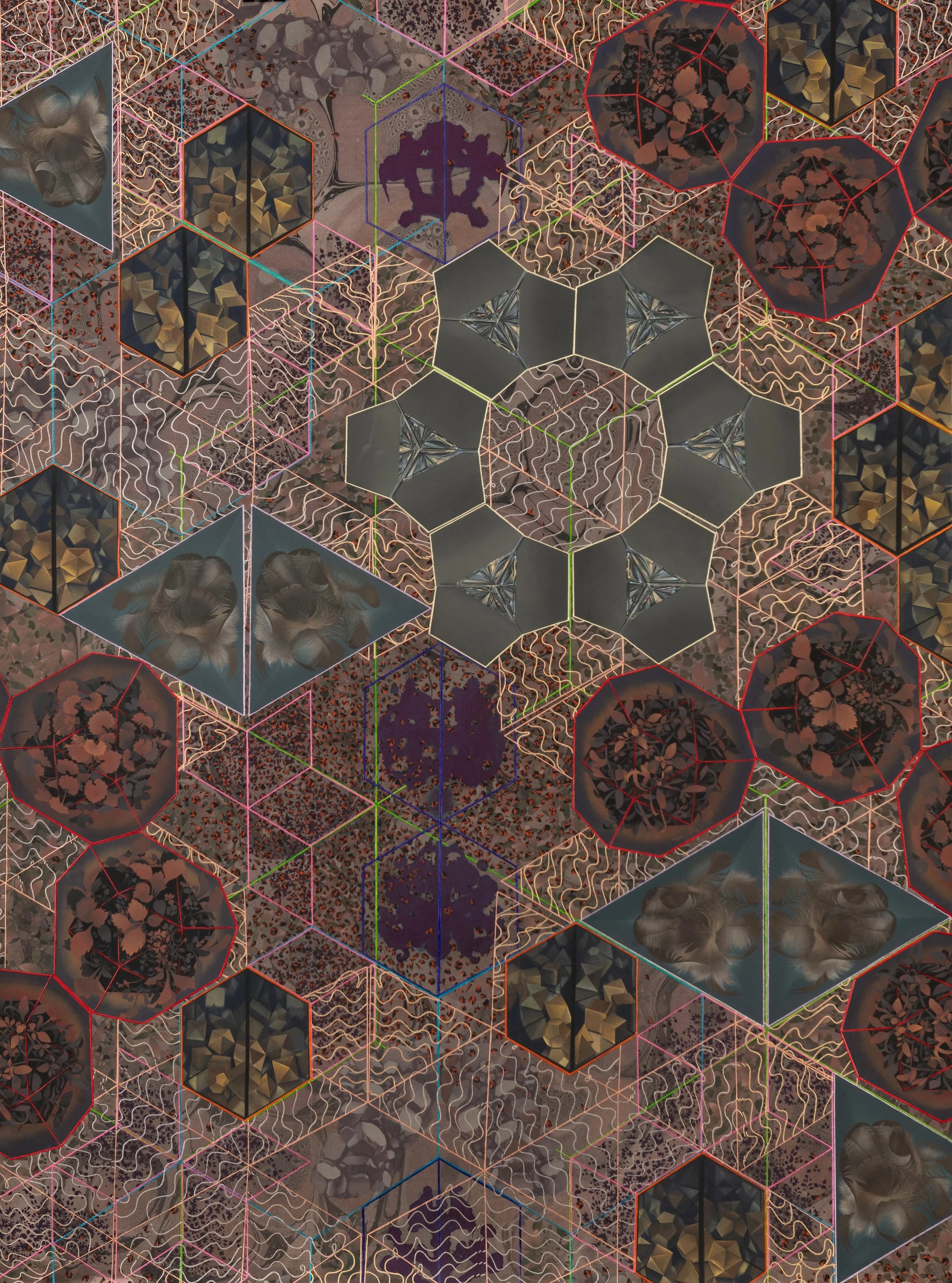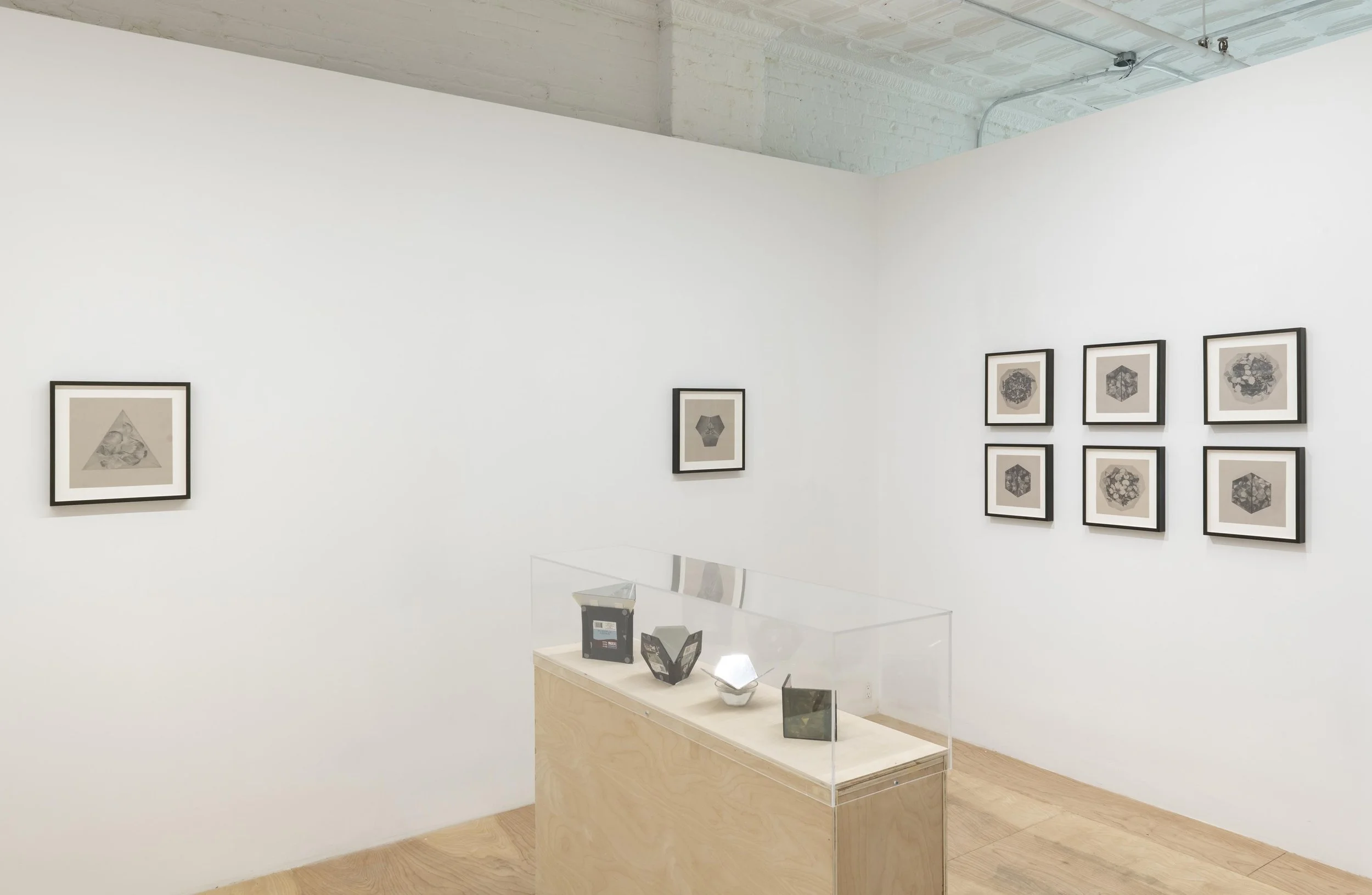Zoe Pettijohn Schade/ Attempts at Self Organization: The Grand Sorting, 2024-25/ gouache with dyed silver leaf, toned aluminum leaf, copper leaf, gold leaf, and palladium leaf on paper /
49 7/16 x 36 3/4 inches
Zoe Pettijohn Schade
Attempts at Self-Organization: Grand Sorting
November 8th - January 3rd
Opening Reception: Saturday, November 8th, 6-8 pm
Kai Matsumiya presents the next single-work exhibition by Zoe Pettijohn Schade, featuring the second large completed painting in her ongoing series Attempts at Self Organization (2018–). The single work, which has taken an average of two years with singular dedicated focus, is titled Attempts at Self Organization: The Grand Sorting (2024–25) and follows Attempts at Self Organization: Prevailing Bonds (2023–24).
Schade’s practice explores how individual forms cluster and cohere within self-imposed systems, culminating in Shifting Sets. She works primarily in gouache, a medium with a long history in textile and miniature painting, which she studied during her Fulbright at the Forney Library in Paris. Its matte surface and mutable body lend both precision and openness to the act of painting: it lies perfectly flat yet remains reworkable, allowing color to fade or sharpen, and old pigments to live again in new configurations.
The current series extends from her earlier body of work, Crowds (2013–2018), in which repetition and variation operated as laws governing a collective field. In Crowds, individual elements—shooters, conflict arrows, decapitated kings, vermicular shapes, monkeys—repeated like subjects within a civic order: socially bound by shared structure, yet each with its own degree of freedom, disobedience, or collapse. Points of weakness or variation did not rupture the whole but revealed the unstable gray areas where the rules themselves began to blur.
Zoe Pettijohn Schade/ Crowd of Crowds: Obedience Scale/ 2018 / Gouache on Paper /34 x 45 in. / 86.4 x 114.3 cm
closeup
With Attempts at Self Organization (2018–), Schade turned from social to natural analogies. The structure in these works functions less like a civic order than a set of physical laws. Each iteration examines how matter seeks equilibrium, testing whether order arises through cooperation or competition.
installation view of the single work show, Attempts at Self-Organization: Prevailing Bonds (2024)
Zoe Pettijohn Schade/ Attempts at Self Organization: Prevailing Bonds/ 2024 / gouache with dyed silver leaf, toned aluminum leaf, copper leaf, gold leaf, and palladium leaf on marbled paper/ 49½ x 36¾ in. 125.73 x 93.34 cm
The second exhibition in this sequence, Attempts at Self Organization: Prevailing Bonds (2022–24), emphasized formations where longer edges joined, producing expansive organic armatures that stretched across the surface, overlapping with other shapes. Some face extinction, others flourish. The first exhibition, The Hard Problem (2018–2022), displayed twenty-six drawings and nine medium paintings—each roughly eighteen by twenty-two inches—that grew increasingly complex and layered, a culmination of four years of focused work.
installation view of The Hard Problem (2023)
Installation view of the Hard Problem (2023)
These elements lead up to Attempts at Self Organization: Prevailing Bonds (2022–24) and the current iteration, Attempts at Self Organization: The Grand Sorting (2024–25), both large paintings approximately forty by fifty inches. There will be a third, completing a trilogy we hope will one day be united in a single institutional exhibition.
With Attempts at Self Organization: The Grand Sorting (2024–25), the dynamic has shifted from bonding to sorting, a quieter system of differentiation and persistence. Here the network steadies itself; growth yields to stillness, and the organic impulse gives way to reflection. The work recalls Plato’s Timaeus, where before the world was ordered, the four elements “swayed unevenly under the impact of their motion… as the contents of a winnowing basket,” until likeness drew to likeness and measure emerged from disorder. Schade’s painting inhabits this threshold before divine calibration, when matter separates of its own accord, seeking proportion and affinity.
Upon entering the gallery, the first area opens onto a cosmology of research materials that have informed Pettijohn Schade’s practice in general but with a particular focus on The Grand Sorting (2024–25). This first room is not an exhibition but a presentation: roughly forty feet of running desk space will feature books that have shaped the artist’s thinking—female mysticism in the church; the construction of feminism from the Middle Ages; philosophies of organization; Platonic and metaphysical approaches to the natural world; and body, matter, disease, monstrosity, error, and uncertainty.
Mirrored devices, alongside paper maquettes and research drawings, will be presented. These instruments, shaped from Platonic solids—the cube, pyramid, dodecahedron, and one composed of hexagons—generate new forms when an element is placed within their angled mirrors. Through these tools, Schade explores how reflection and multiplication produce order, perception, and difference.
In the second room, Attempts at Self Organization: The Grand Sorting (2024–25) stands alone as a single painting. The presentation was in part inspired by what Baudelaire described in The Windows (1869):
“There is nothing more profound, more mysterious, more fertile, more shadowy, or more dazzling than a window lighted by a candle. What one can see out in the sunlight is always less interesting than what goes on behind a windowpane.”
The first room, with its presentation of books, mirrored devices, and research materials, acts as that window—an entryway into the inner world of The Grand Sorting (2024–25), which awaits in the second room in solitary, uninterrupted form.

